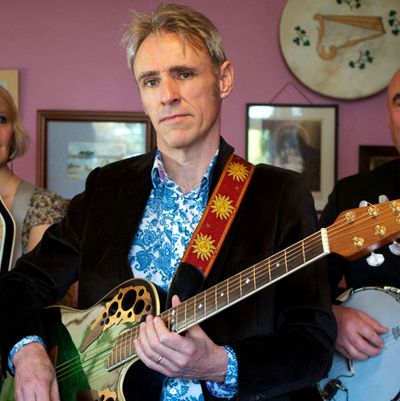
The Up series will have to go down in history as one of the more touching and ambitious cinematic and televisual experiments of our — or anyone else’s — time. In 1964, director Paul Almond took twenty kids, all age 7, and asked them questions about their lives and hopes and fears for Britain’s Granada Television network. Seven Up!, the original film — inspired by the Jesuit saying “Give me a child until he is seven and I will show you the man” — was meant to be a stand-alone affair. The idea of sequels came later, which helps to explain why minorities and women were so poorly represented: There were only four girls in that original group, and only one of the subjects was non-white — ironic, since the original film was a more politically pointed affair, made from the point of view that class, particularly in Britain, essentially determined who you would get to be.
Since that first film, there’s been a new installment every seven years — 7 Plus Seven, 21 Up, 28 Up, and so on, all now directed by Michael Apted, who was a researcher on the original film (and who also has a lucrative Hollywood career; he’s directed stuff like Coal Miner’s Daughter, the James Bond film The World Is Not Enough, and last year’s Chasing Mavericks). So now here we are at 56 Up, in which these once bubbly, precocious, adorable, surprisingly fearless kids have gone through most of the adventures of adulthood and are now approaching retirement age, looking back and taking stock of their lives for the cameras.
Or rather, the film is doing most of the stock-taking for them, since the subjects are busy living their lives. One of the smarter characteristics of the Up series has been how relatively unintrusive the films have been. Seven years is a long time, and the filmmakers reportedly only visit with their subjects for a couple of days; in the meantime these people get to go on about their business — marrying, having kids, divorcing, changing careers, getting fired, etc. Each installment of the film series has brought some genuine surprises as well as disappointments and minor victories.
Needless to say, some of these figures have proven to be more memorable than others. 21 Up, 28 Up, and 35 Up were notable mainly for their portrayals of Neil Hughes, a once lively dreamer who seemed to lose his moorings psychologically in his twenties; he was homeless for a while, and one watched the films fearing the worst about what might happen to him by the time of the next installment: He seemed so emotionally fragile that you didn’t think he’d last another day, let alone another seven years. 56 Up finds him alive and well. Having once dreamed of becoming a politician, he actually has become a local Liberal Democrat council member in his district of Cumbria. But his troubles aren’t entirely over: He’s still a haunted figure, ruminating on previous suicide attempts and noting that, despite his position, he still isn’t really making any money. He’ll never regain the vitality of youth, but in his twitchy, frantic mannerisms you sense a person still running from — or to — something.
This time around, you sense people starting to slow down, in some cases to enjoy life and in other cases to tolerate it. But how odd, though, that this series, which started off as something so pointedly political and confrontational, now has a kind of mild-mannered ease to it: When politics rears its head now — as when Lynn Johnson, for many years a school librarian now made redundant as a result of budget cuts, passionately rails against the government’s austerity measures — it feels like a strange provocation. One subject, Peter Davies, notes that he dropped out of the series for several installments after the press got on his case for some anti-Thatcher remarks he made in 28 Up. Now he’s back — but it’s to promote his new country-pop band, which he founded after discovering the music of Graham Parsons.
In other words, the aforementioned Neil is still the more fascinating of the subjects, and you wish the entire movie had been about him, but that’s not really the point here. And here’s where the presentation gets a little in the way. For perhaps obvious reasons, 56 Up, like most of its predecessors, intercuts the contemporary footage with moments from the earlier films. That has the positive effect of making the film self-contained; you don’t have to have seen, or to remember, the earlier films to understand and appreciate the new one. But Apted, perhaps trying to keep up with the dictates of fast-moving, TV-friendly reportage, overdoes the intercutting. So that when somebody tells you that they’re happy at 56 with an ordinary life, an ordinary family, an ordinary job, you can’t help but look back on an errant childhood belief they might have expressed of changing the world and wonder, But are they happy?
The effect is poignant, to be sure — the impulse to tease out a narrative from an ordinary person’s life always is — but it’s also slightly bogus. The film misses out on intimacy, which could do more to reveal these people as individuals, for the sake of charting a broader trajectory. This is more social anthropology than psychology. 56 Up isn’t concerned so much with opening up individual lives as it is with showing us how the journey of an ordinary life — or over a dozen ordinary lives — can offer insights into our own, and into society. The effect is often profoundly moving, but you can’t help but feel at times like there are other stories here you’re missing.


